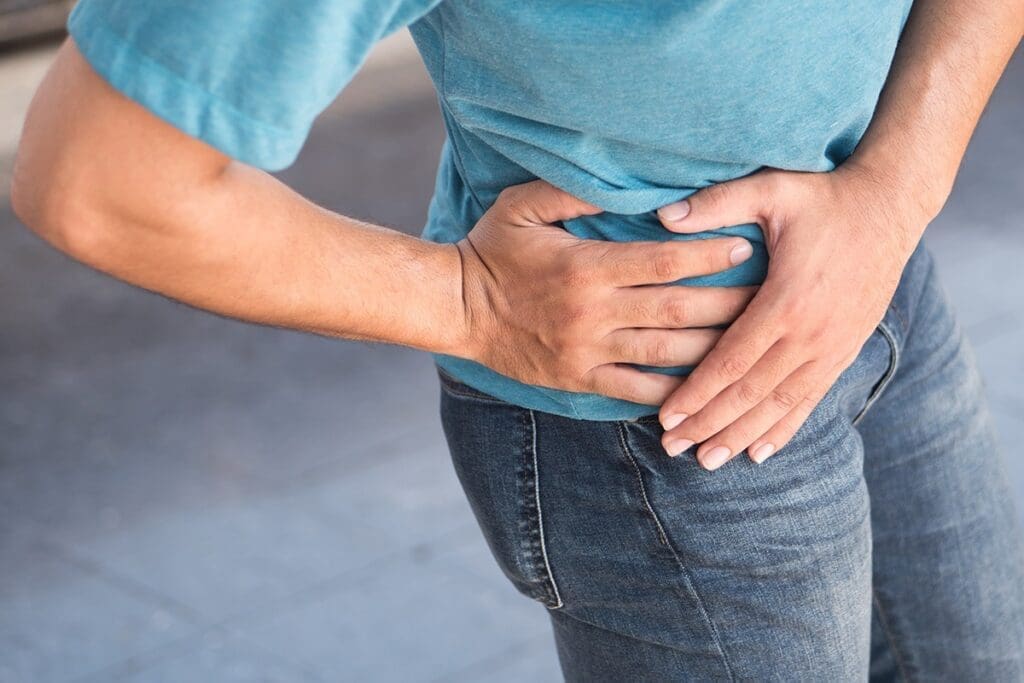Last Updated on November 25, 2025 by Ugurkan Demir

Kidney stones are hard objects made of minerals and salts in urine. They form inside the kidneys. These stones can be very small, less than 1 millimeter, or quite large, up to several centimeters in diameter. Explore how big are kidney stones and what to expect based on size.
Knowing how big kidney stones are is key to figuring out the right treatment. At Liv Hospital, we focus on each patient’s needs. We consider the size and where the stones are located when treating them.

Kidney stones are hard deposits made of minerals and salts that form inside the kidneys. Their formation is influenced by many factors. These stones can cause severe pain, nausea, and vomiting. In some cases, they may lead to complications such as infection or kidney damage.
Kidney stones, also known as renal calculi, are solid masses of crystals that form in the urine. Most kidney stones are smaller than 4 millimeters and can pass naturally through the urinary system. Larger stones can cause significant discomfort and may require medical treatment.
Kidney stones form when the urine contains more crystal-forming substances than it can dilute. This concentration leads to the crystallization of minerals like calcium, oxalate, and uric acid. Factors that contribute to their formation include inadequate hydration, dietary habits, and genetic predisposition.
The process of stone formation involves several steps. These include supersaturation of the urine, crystallization, and aggregation of crystals. Understanding these processes is key to developing effective prevention strategies.
Several factors contribute to the development of kidney stones. These include:
The majority of kidney stones are composed of calcium oxalate. Other types include uric acid stones, struvite stones, and cystine stones. Each type has different underlying causes.
| Type of Stone | Common Causes | Characteristics |
| Calcium Oxalate | High oxalate intake, dehydration | Most common type, often associated with dietary factors |
| Uric Acid | Low urine pH, excessive animal protein intake | More common in men, associated with conditions like gout |
| Struvite | Urinary tract infections | Often associated with infections, can grow quickly and become large |

Kidney stones come in all sizes, and their size is very important. It helps doctors decide if they can pass on their own or if they need help.
The smallest kidney stones are tiny crystals, smaller than 1mm. These tiny stones are hard to see and might not cause problems until they grow bigger.
Stones between 1 and 4mm are small. They have a good chance of passing on their own. Stones in this size range have about an 80 percent chance of passing naturally, but it depends on the person.
Medium stones are 4 to 6mm big. Stones in this size have about a 60 percent chance of passing naturally. The chance of passing on its own goes down as the stone gets bigger.
Large stones are 6 to 9mm. At this size, they are less likely to pass on their own. Stones bigger than 6mm have less than a 20 percent chance of passing without help. Doctors might use treatments like ESWL or ureteroscopy for these big stones.
The size of a kidney stone is very important for treatment. Knowing the size helps doctors choose the right treatment. It’s either to wait and see or to use more serious treatments.
“The size of the stone is a key factor in determining the treatment approach,” says Medical Expert, a leading urologist. “Accurate measurement and classification of kidney stone size are essential for effective management.”
Accurately measuring kidney stones is key in managing kidney stone disease. Healthcare providers need to know the size and location of the stones to plan treatment.
Diagnostic imaging is essential for measuring kidney stones. The main methods include:
Doctors use images from diagnostic imaging to measure kidney stone size. They measure in millimeters or centimeters. This is important for choosing the right treatment.
When you get your kidney stone measurement reports, it’s important to understand them. The reports will tell you about the size, location, and number of stones. Here’s a simple table to help you understand your reports:
| Measurement Detail | Description | Implication |
| Stone Size | Measured in mm or cm | Determines treatment approach |
| Stone Location | Identifies where the stone is located in the urinary tract | Affects treatment complexity |
| Number of Stones | Indicates if there are multiple stones | Influences overall treatment plan |
Understanding your kidney stone measurements is vital for informed care decisions. Always talk to your healthcare provider to understand your situation and the recommended treatment.
Small kidney stones, between 1 to 4 millimeters, can be quite painful. But, knowing what to expect can ease your worries. Most kidney stones are under 4 millimeters and can move through your system on their own.
Small kidney stones often cause pain and discomfort. The pain can be intense and may spread to your lower abdomen, groin, or back. You might also experience:
It’s vital to recognize these symptoms to get the right medical care.
Small kidney stones usually take about 31 days to pass on their own. But, this time can change based on the stone’s size, where it is, and your health.
Knowing the natural passage timeline can help you manage your expectations and calm your nerves.
While waiting for the stone to pass, there are ways to ease your symptoms:
Using these self-care strategies can help you cope with your symptoms and possibly help the stone pass faster.
Kidney stones that are 4 to 6 millimeters in size often raise questions about passing them naturally. These stones pose a challenge as they don’t always pass on their own. We will look into the passage rates, expected timeline, and management options for these stones.
Stones in the 4 to 6 millimeter range have about a 60 percent chance of passing naturally. This figure comes from studies and clinical observations. It’s important to note that factors like stone composition, location, and individual anatomy can affect passage.
The time it takes for a medium-sized stone to pass can vary. On average, it’s about 45 days. But, this time can change based on hydration, physical activity, and any urinary tract obstructions.
While many medium-sized stones pass naturally, some need medical help. Seek medical attention for severe pain, fever, vomiting, or blood in your urine. Also, if the stone doesn’t pass in the expected time, you should get checked out.
Managing pain is key when dealing with kidney stones. For medium-sized stones, pain relief might include over-the-counter meds, staying hydrated, and sometimes prescription drugs. We’ll discuss common pain relief strategies in the table below.
| Pain Management Strategy | Description | Benefits |
| Hydration | Drinking plenty of water to help flush out the stone | Helps in passing the stone, reduces pain |
| Over-the-counter pain relievers | Medications like ibuprofen or acetaminophen | Eases pain and inflammation |
| Prescription pain medications | Stronger medications for severe pain | Effective for managing severe pain |
Knowing about passage rates and timelines for medium-sized kidney stones helps both patients and doctors make better treatment choices. While many pass naturally, knowing when to seek medical help is key to avoiding complications.
Kidney stones over 6mm are tough to pass on their own. The size of a stone is key in deciding if it can pass naturally or if medical help is needed.
Stones bigger than 6mm often need more than just home remedies. We’ll look at why these stones don’t pass naturally, the risks of not treating them, and the treatment choices.
Big stones can’t pass naturally because of their size. They might get stuck in the urinary tract. This can block urine flow, causing a lot of pain and possibly infections or kidney damage.
The chance of a stone passing naturally drops as it gets bigger. Stones over 6mm rarely pass on their own. So, medical treatment is usually needed.
Untreated big stones can cause serious problems. These include a lot of pain, infections, and damage to the kidney or urinary tract.
There are many ways to treat big kidney stones. The right treatment depends on the stone’s size, where it is, and the patient’s health.
Some common treatments are:
We’ll go into more detail about these treatments in the next sections.
Kidney stone size is key in choosing treatment. It can range from simple care to surgery. The stone’s size, where it is, and the patient’s health help doctors pick the best treatment.
Small stones (less than 4mm) usually get treated first without surgery. Doctors watch the stone, manage pain, and make sure the patient drinks enough water. Most small stones pass without needing invasive procedures.
Some medicines help small stones move. Alpha-blockers relax the ureter muscles, making it easier for the stone to pass. We also give pain meds to ease discomfort.
ESWL is a non-surgical method that breaks stones into smaller pieces. These pieces then pass in urine. It works for stones 6mm to 2cm in size, in the kidney or upper ureter.
For bigger stones or those not good for ESWL, ureteroscopy with laser lithotripsy is used. A small scope goes through the urethra and bladder to see the stone. A laser then breaks it into smaller pieces that can be removed or passed out.
| Stone Size | Typical Treatment Approach | Success Rate |
| Less than 4mm | Conservative Management | High |
| 4mm-6mm | Medication, possible ESWL | Moderate to High |
| 6mm-2cm | ESWL or Ureteroscopy | High |
Kidney stones that are 1.5cm in size need extra care. They can cause a lot of pain and problems. But, they can often be treated with medical help.
A 1.5cm kidney stone is quite big. It can get stuck in the urinary tract. This can cause a lot of pain and blockages.
The type of stone and where it is matter a lot. They help doctors decide how to treat it.
People with 1.5cm kidney stones feel a lot of pain, nausea, and vomiting. If the stone blocks the urinary tract, it can lead to infections or damage to the kidney.
It’s very important to see a doctor if you have fever, severe pain, or trouble urinating.
For 1.5cm kidney stones, treatment is not just waiting it out. Ureteroscopic lithotripsy is often used. It breaks down the stone with laser energy.
Other options might include Extracorporeal Shock Wave Lithotripsy (ESWL). This depends on the stone’s location and what it’s made of.
After treatment, patients may feel some pain. Pain management is key. Drinking lots of water helps get rid of any stone bits left behind.
It’s important to follow up with doctors. This makes sure the urinary tract is clear and there are no more problems.
Dealing with kidney stones is tough. We want to give the best care. Knowing about 1.5cm kidney stones helps patients understand their treatment better.
Kidney stone passage is influenced by more than just size. While size matters, other factors are also important.
The stone’s location in the urinary tract is key. Stones near the bladder are more likely to pass than those higher up.
Key locations that affect stone passage include:
The stone’s composition and hardness matter too. Harder stones are less likely to pass on their own and might need medical help.
Common types of kidney stones include:
Everyone’s body is different, and this can affect stone passage. Narrow ureters or other issues can make it harder for stones to move.
Staying hydrated is key for passing stones. Drinking enough water helps with urine flow, which can push the stone out.
Tips for maintaining good hydration include:
To prevent kidney stones from coming back, you need to make changes in your diet, drink enough water, and sometimes take medicine. We know how painful and uncomfortable kidney stones can be. So, we want to help you avoid that.
The kind of kidney stone you had tells you what diet changes to make. For example, if you had calcium oxalate stones, eat less foods high in oxalate like spinach and beets. If you had uric acid stones, cut down on foods rich in purines, like organ meats and some seafood.
Drinking enough water is key to preventing kidney stones from coming back. Try to drink enough to make at least 2 liters of urine a day. This helps keep your urine diluted and lowers the chance of minerals forming stones.
Monitoring urine color is a simple way to check if you’re drinking enough water. It should be pale yellow. If it’s dark yellow or amber, you might need to drink more.
In some cases, you might need medicine to prevent kidney stones from coming back. For example, thiazide diuretics can help lower calcium in your urine. Allopurinol might be given if you have high uric acid levels.
| Medication | Purpose |
| Thiazide diuretics | Reduce calcium in urine |
| Allopurinol | Lower uric acid levels |
| Potassium citrate | Reduce acidity of urine |
Along with diet and hydration, making lifestyle changes can also help prevent kidney stones. Keeping a healthy weight, managing stress, and eating less animal protein can all help.
By following these prevention strategies, you can greatly lower your risk of getting kidney stones again. We’re here to help you understand and manage your kidney health.
Knowing about kidney stones is key to managing them. We’ve looked at different stone sizes, how they form, and treatment options. This helps you understand your situation better.
Small stones might go away on their own with simple steps. But bigger stones might need doctor help. The stone’s size, where it is, and your body shape also matter.
Understanding your journey with kidney stones helps you make better choices. The right treatment depends on the stone’s size, location, and your health. It’s all about finding the best way to help you.
With the right knowledge, you can handle kidney stones well. This lowers the chance of problems and boosts your health. We hope this info helps you manage your kidney stone journey better.
Kidney stones can be different sizes. They usually range from 1-9mm. Some can be as big as 1.5cm or more.
Most kidney stones are between 1-4mm. This is considered small. Stones larger than 6mm are bigger.
Kidney stones come in various sizes. There are microscopic crystals (less than 1mm), small stones (1-4mm), medium stones (4-6mm), and large stones (6-9mm or larger).
Doctors use CT scans or ultrasounds to measure kidney stones. They report sizes in millimeters or centimeters.
A 1.5cm kidney stone is considered large. It rarely passes on its own. Often, it needs medical help like ESWL or ureteroscopy.
For large stones, treatments include ESWL, ureteroscopy with laser lithotripsy, and surgery. The choice depends on the stone’s size and location.
To prevent kidney stones, try dietary changes, stay hydrated, and consider medication. Making lifestyle changes can also help.
Beyond size, passage is affected by the stone’s location, composition, and your anatomy. Hydration also plays a role.
Small stones might cause pain, discomfort, or trouble urinating. But, some small stones don’t cause symptoms at all.
Passing time varies by stone size. Small stones usually pass in 31 days. Larger stones may take longer or need medical help.
National Center for Biotechnology Information. (2025). How Big Are Kidney Stones Size Guide. Retrieved from https://www.ncbi.nlm.nih.gov/pmc/articles/PMC2930196/
Subscribe to our e-newsletter to stay informed about the latest innovations in the world of health and exclusive offers!